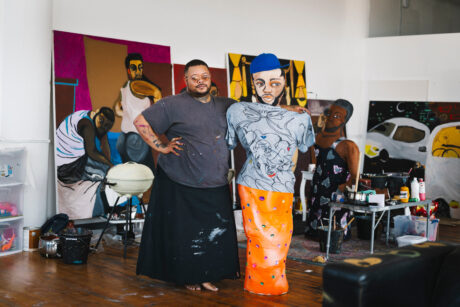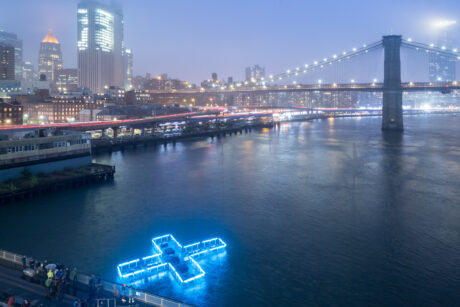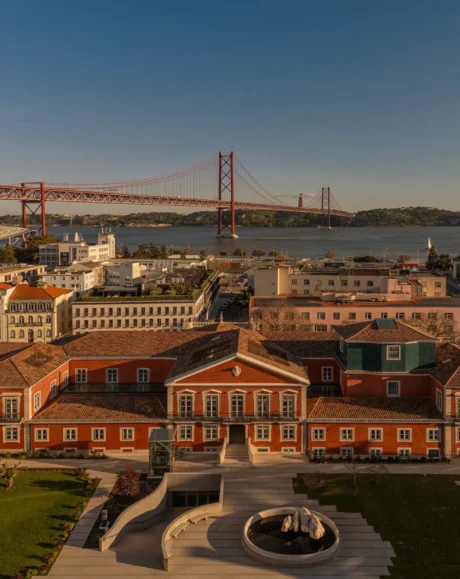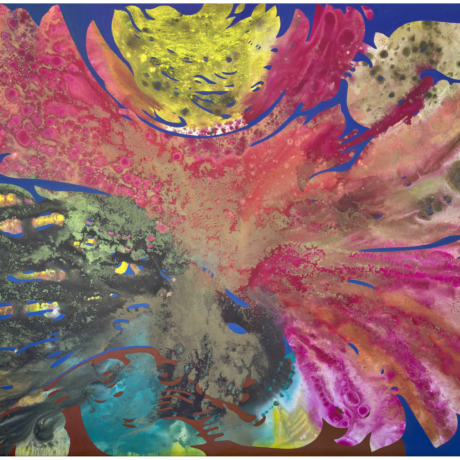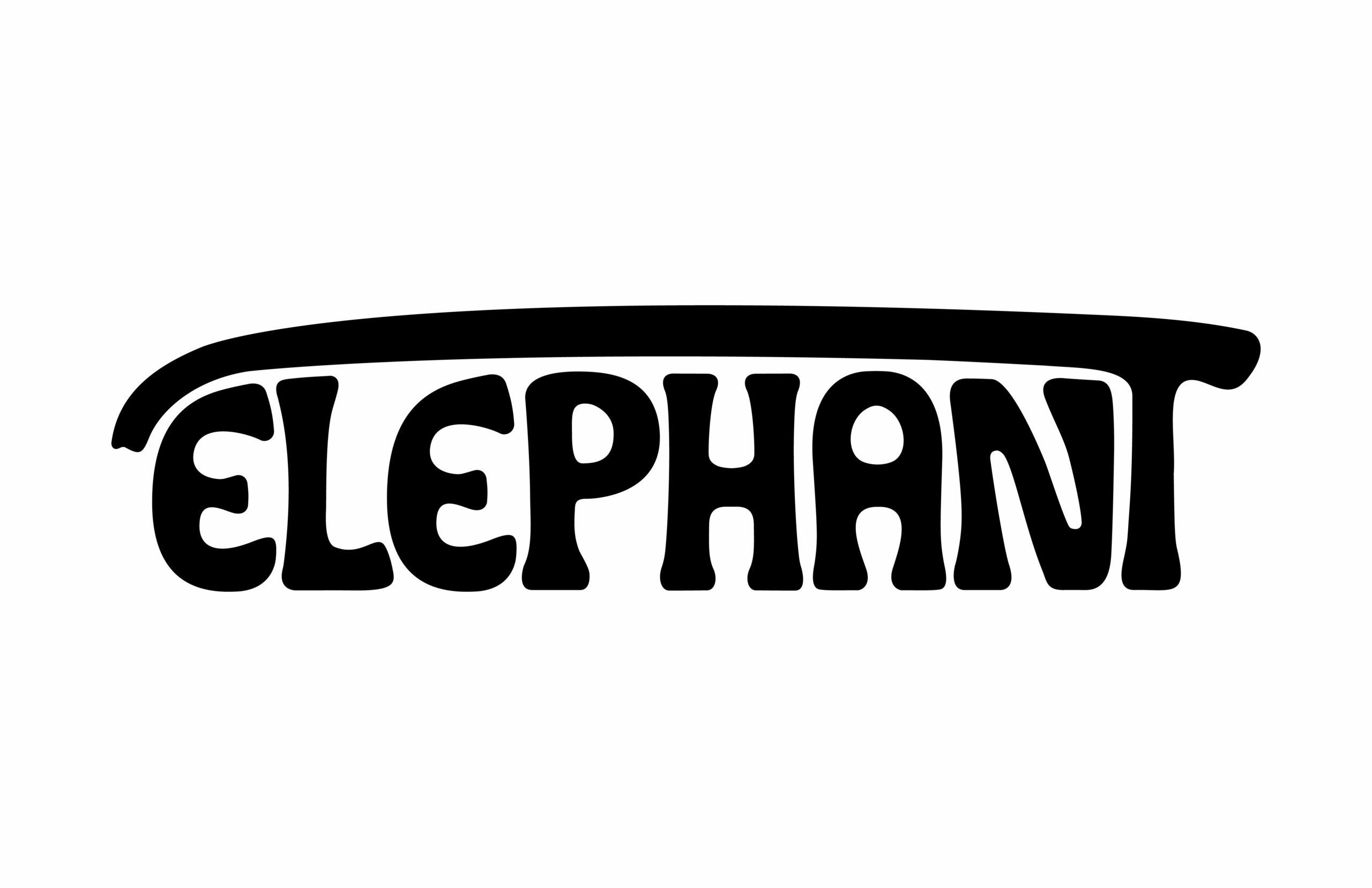Where better to hang out with an artist than at a gallery? Desmond Vincent spends an afternoon visiting some popular Lagos galleries with Anthony Azekwoh, one of Africa’s most mesmerising digital artists, to catch up on all things art and career.
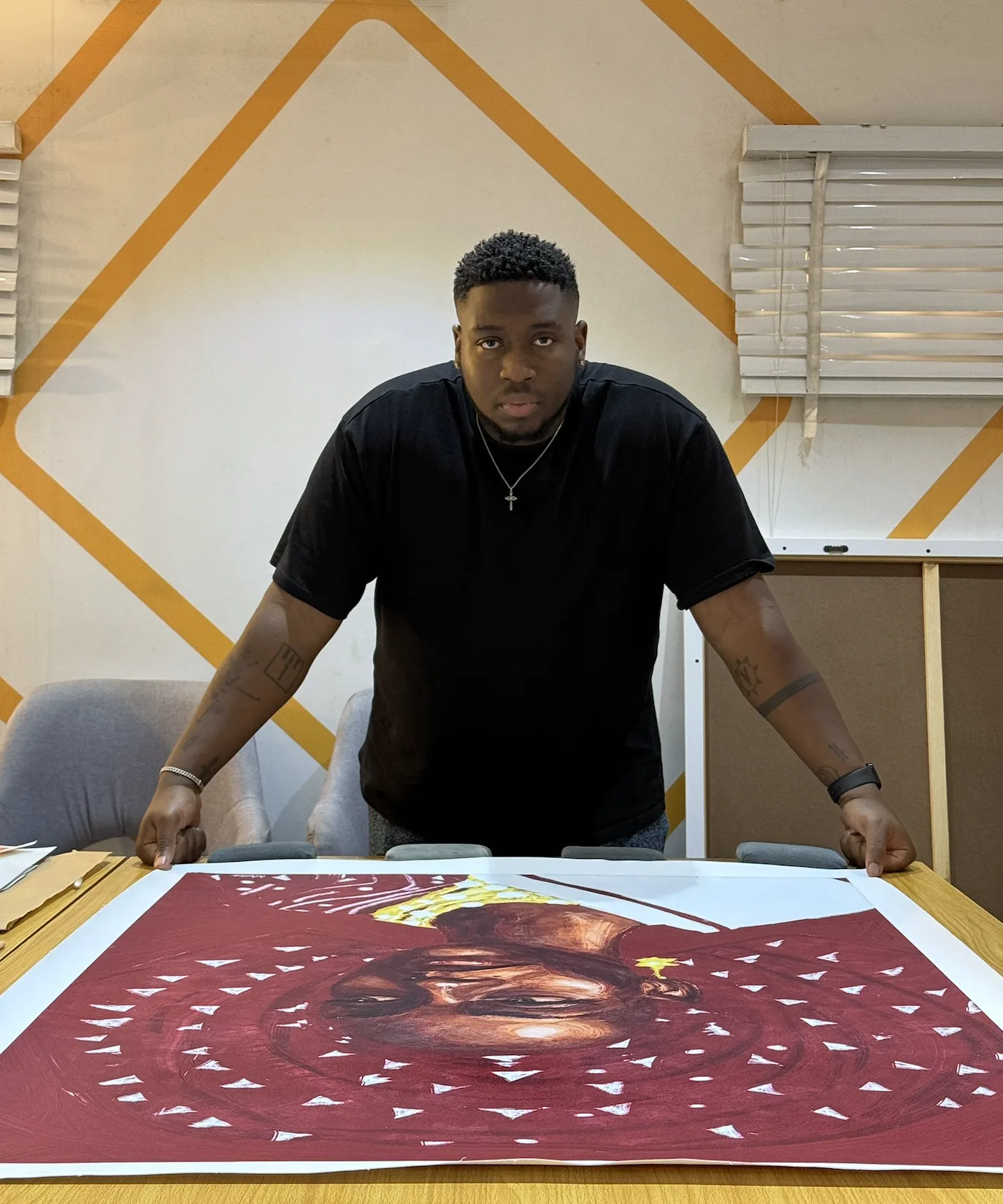
One of the first questions I ask Anthony Azekwoh is how he interacts with art and galleries, especially since creating and participating in exhibitions is now his norm. Anthony pauses before responding: ‘As an investigator.’ As Anthony says this, he is investigating; currently, we are at Rele Gallery where the showcase of Young Contemporaries 2025 is going on – an exhibition featuring six artists working across different media. We’re both staring at a piece of Bakare Shariff, a marble wonder that has Anthony fascinated. He walks back and forth and talks to me about what would have – could have – gone into making the work before him. He’s right, he is an investigator. ‘I need to find this guy, he’s doing something! He did this by hand, which is insane – there may be some magicians left.’ You get the sense that Anthony is first and foremost a fan of art. Minutes after he steps into the gallery, Anthony has already asked for detailed names of the art on display, and is slightly disappointed that they haven’t already been put up. He also makes a pass at adding a piece to his collection; he checks in on what is available for sale and asks for the catalogue to be emailed to him several times.
As Anthony and I peel ourselves from the booth, I ask about his routine, not only because I have a mild obsession with the routines and systems that allow creatives to do the work that they do, but also because Anthony famously puts out work with such consistency that people ask if him whether he sleeps. The truth is, he doesn’t – not at night, anyway. ‘I usually get up at around 9 a.m.,’ he tells me, ‘and during the morning, I do my admin tasks, press, and interviews. Then at night, I’m usually creating until 3 or 4 a.m.’ This routine has been instrumental in helping Anthony make his mark on the African ecosystem with a consistency that few other artists in the space can lay claim to. His viral NFT piece The Red Man sold for over $25,000 and helped establish him as a trailblazer in the African digital art space. Since then, he has expanded his craft to include three-dimensional, non-virtual sculptures, and has collaborated with artists like Adekunle Gold and Blaqbonez.
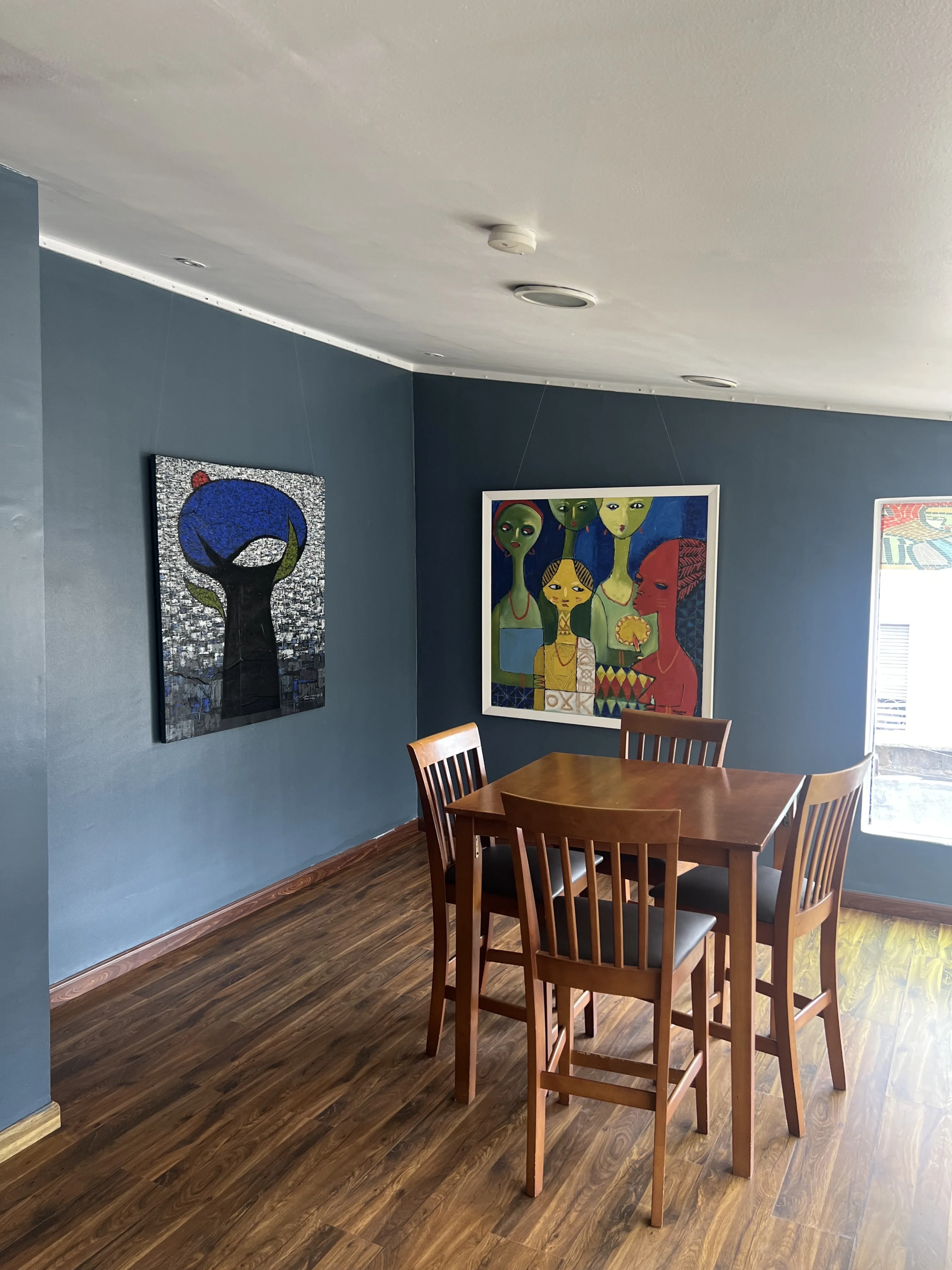
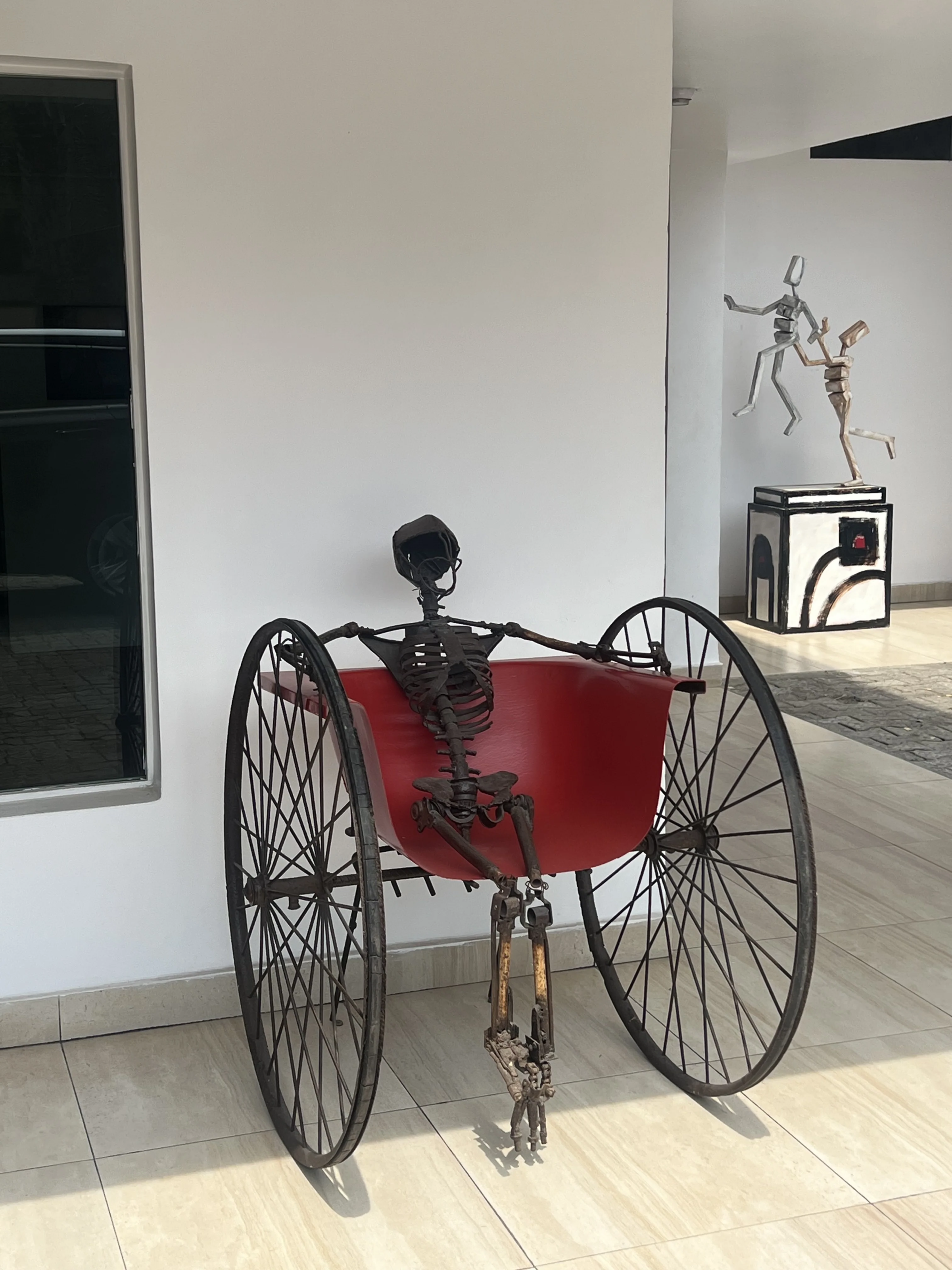
A few minutes later, we climb the stairs of Rele as Anthony shares how digital art in Nigeria still fails to get recognition: ‘There was a prize that reached out to me, recommending that I apply, and when I did, they reached back out asking if I had traditional art. But I wasn’t moved, because if you can’t make space for me now, then keep it. I also don’t internalize it anymore; I have been at this [practice] for years, and look at the scoreboard.’ I ask him why thinks it is this way with digital art. He answers me simply, ‘It’s because it is new,’ just as a woman in a white suit walks across the hallway. Anthony pauses and asks a gallery worker at Rele who she is. When told it’s Adenrele Sonariwo, the founder of Rele Gallery, as Anthony had suspected, he realises he might be blocking her car – a hilariously classic Lagos meeting.
We are sat in his car, ready to drive off, when Anthony gives me the golden rule for driving with him: no screaming, no matter what. I am not ashamed to say that I might have broken the rule a few times. And the accompanying driving playlist? An actual eclectic mix: we start off with the track You Got Me by Jill Scott, Eve and The Roots, then transition to the music of Westside Boogie, and Euphoria by Kendrick Lamar. The latter makes us nostalgic for the past year, while looking forward to the joy of looking forward to telling kids to come about being alive during the Drake-Kendrick Lamar feud. We first arrive at Tiwani Contemporary, which is unfortunately closed, so we make a few more turns to Red Door Gallery which, true to its name, has a red door. Inside, the receptionist unsurprisingly recognises Anthony. We talk about his more commercial pursuits, then return to the scene of today’s art world. Anthony had mentioned earlier how the opportunity of working in the digital art world cannot be quantified, but he thinks that people debuting their work and emerging on to the scene today have it much harder.
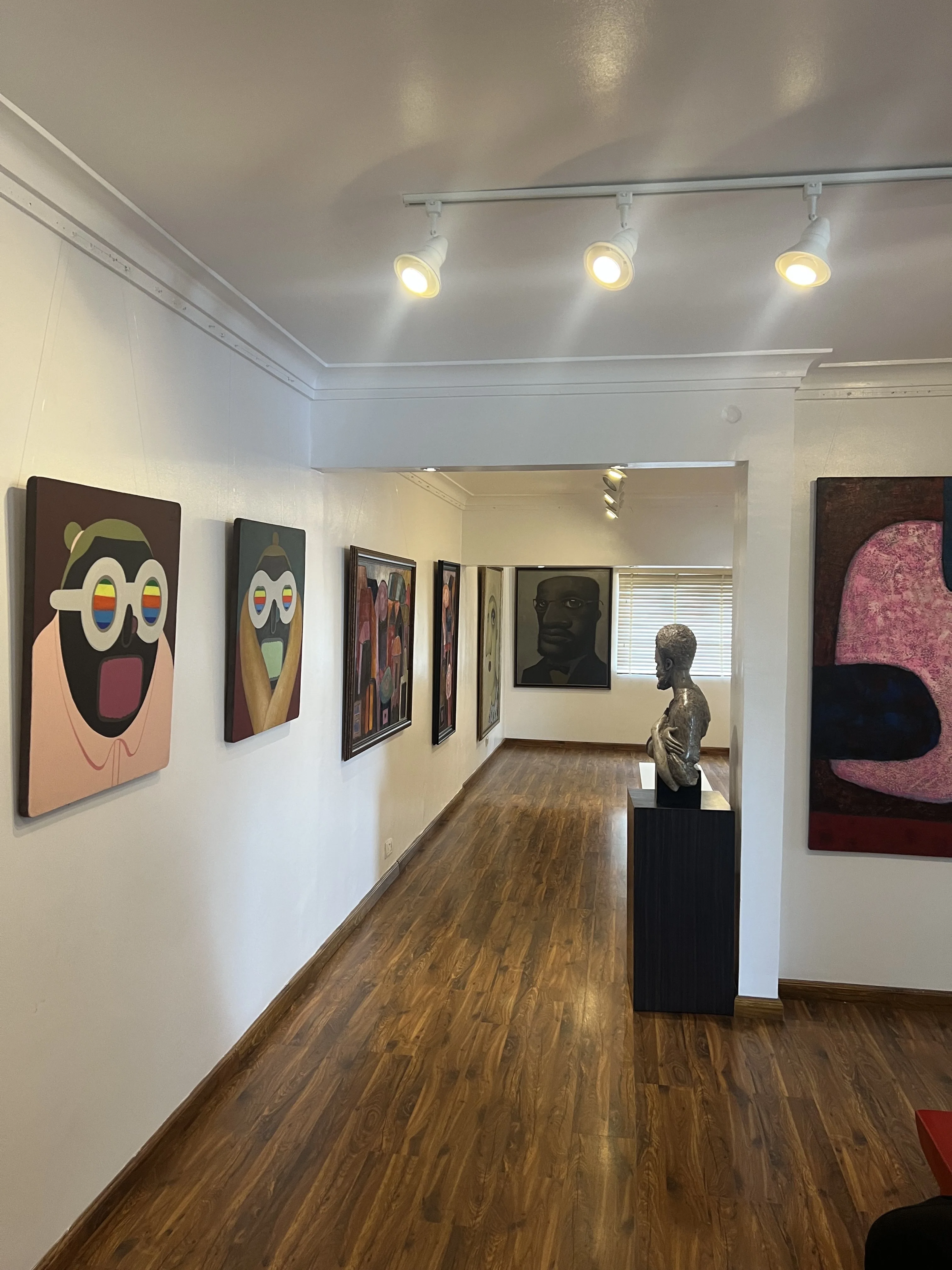
On the ride back, we talk about what he has planned for the year ahead; it’s already shaping up to be a busy one for him. It feels like March or April, he tells me, like we’re smack deep in the middle of the year by now. He has so far completed five paintings, and has plans for an exhibition which he is conceiving in artist terms as a “second album,” a sophomore effort. While he’s still working out the details, he has already started producing the art that will go into it: he shows me some realistic sculptures, all moving and quintessentially Anthony Azekwho. He isn’t sure if these will make the final cut, but that’s not his primary concern. Instead, the artist reveals that his focusing on his training. Slightly thrown off, I ask if he was referring to physical training, and he clarifies: yes, it includes that, but the core of his attention is on the development of his craft. In many ways, the work and the exhibitions that Anthony’s preparing for this year feel like a return to form. Though he has never truly lost form, he is an artist that constantly pushes himself to outdo his previous work and stay ahead of his own progress – a drive that will make the rest of the year an exciting one for anyone paying attention to Anthony’s practice.
Written by Desmond Vincent
